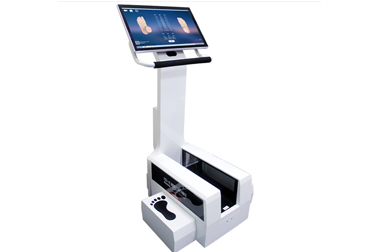The impact of the brand of foot-shaped laser 3D scanner on the price
1. Brand premium and technology maturity
Premium of well-known brands
The price of scanners of international brands or domestic leading enterprises (such as Jingyi Xun) is usually 10%-20% higher than that of small and medium-sized brands, mainly due to technology accumulation, patented algorithms and industry reputation.
High-end brand equipment mostly uses laser phase measurement or high-density structured light technology, with an accuracy of ±0.5mm, suitable for harsh scenarios such as medical orthopedics and industrial reverse engineering, and the price is generally above ¥50,000.
2. Brand positioning and market segment adaptation
Consumer market
Small and medium-sized brands (such as some domestic manufacturers) focus on low-cost solutions and launch basic equipment priced at ¥15,000-35,000, focusing on lightweight scenarios such as shoe size matching and foot health screening.
The accuracy of such equipment is mostly ±1mm, which is suitable for non-professional needs such as shoe stores and small clinics, but lacks dynamic analysis and long-term data tracking capabilities.
Medical/industrial market
Professional brands have technical barriers in the fields of medical correction and sports rehabilitation. The price of equipment can reach more than ¥100,000, supporting millimeter-level precision scanning and multimodal data fusion (such as gait analysis + 3D modeling).

3. Brand service and added value
After-sales service cost
Head brands provide full life cycle services (such as hardware warranty, software upgrades, and operation training). Some manufacturers even provide remote technical support, which indirectly pushes up equipment prices.
Small and medium-sized brands mainly sell hardware and rely on third-party service providers for after-sales service. The initial purchase cost is low, but the long-term maintenance cost may increase.
Industry certification and compliance
Medical-grade equipment must pass FDA, CE and other certifications. Well-known brands have higher compliance investments and their prices are significantly higher than uncertified brands (for example, the price of medically certified scanners is 20%-30% higher than similar uncertified models).
4. Differences in regional market strategies
International brand localization premium
Due to tariffs, logistics and other factors, the domestic price of imported equipment is generally 15%-25% higher than the country of origin (for example, the domestic price of European brand equipment can reach ¥80,000–200,000).
Price advantage of domestic substitution
Domestic leading brands reduce production costs through supply chain optimization, and the price of similar functional equipment is 20%-40% lower than that of imported brands, promoting the popularization of the mid-range market.
